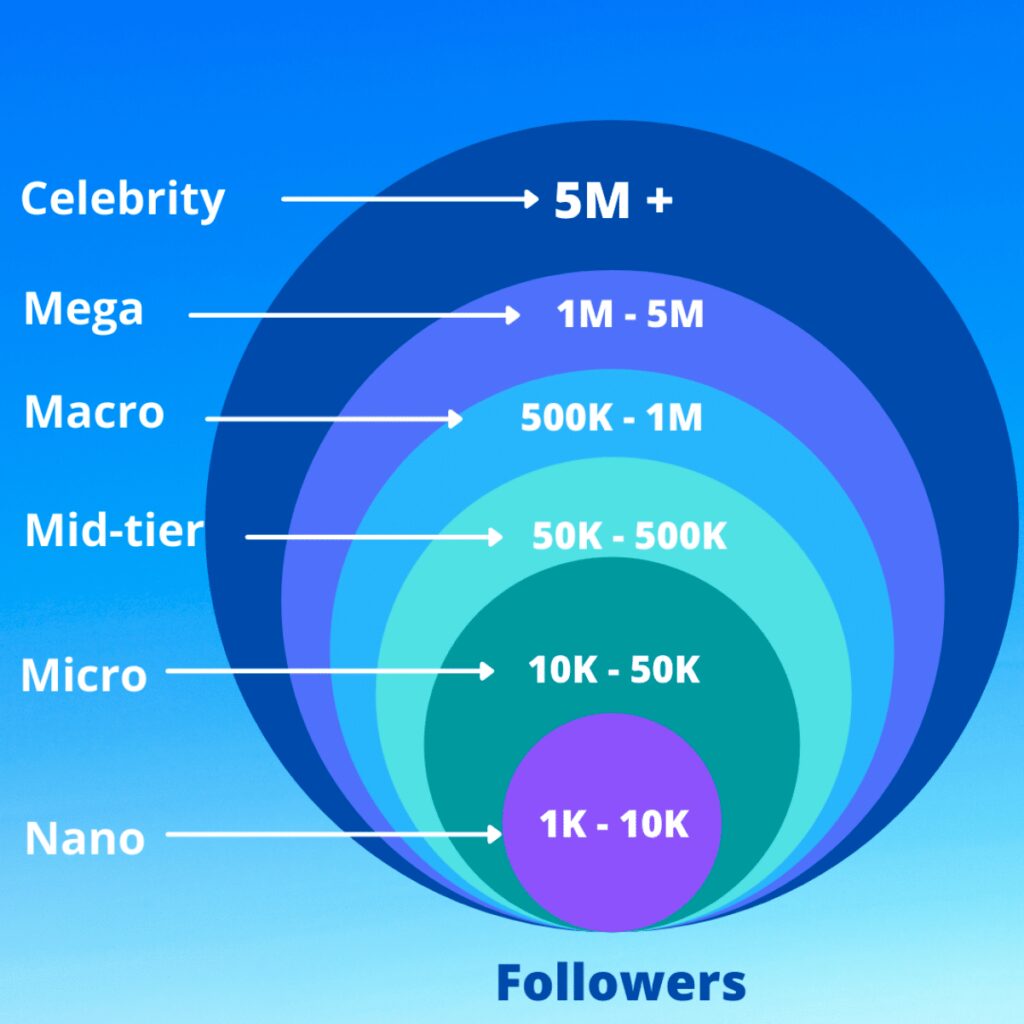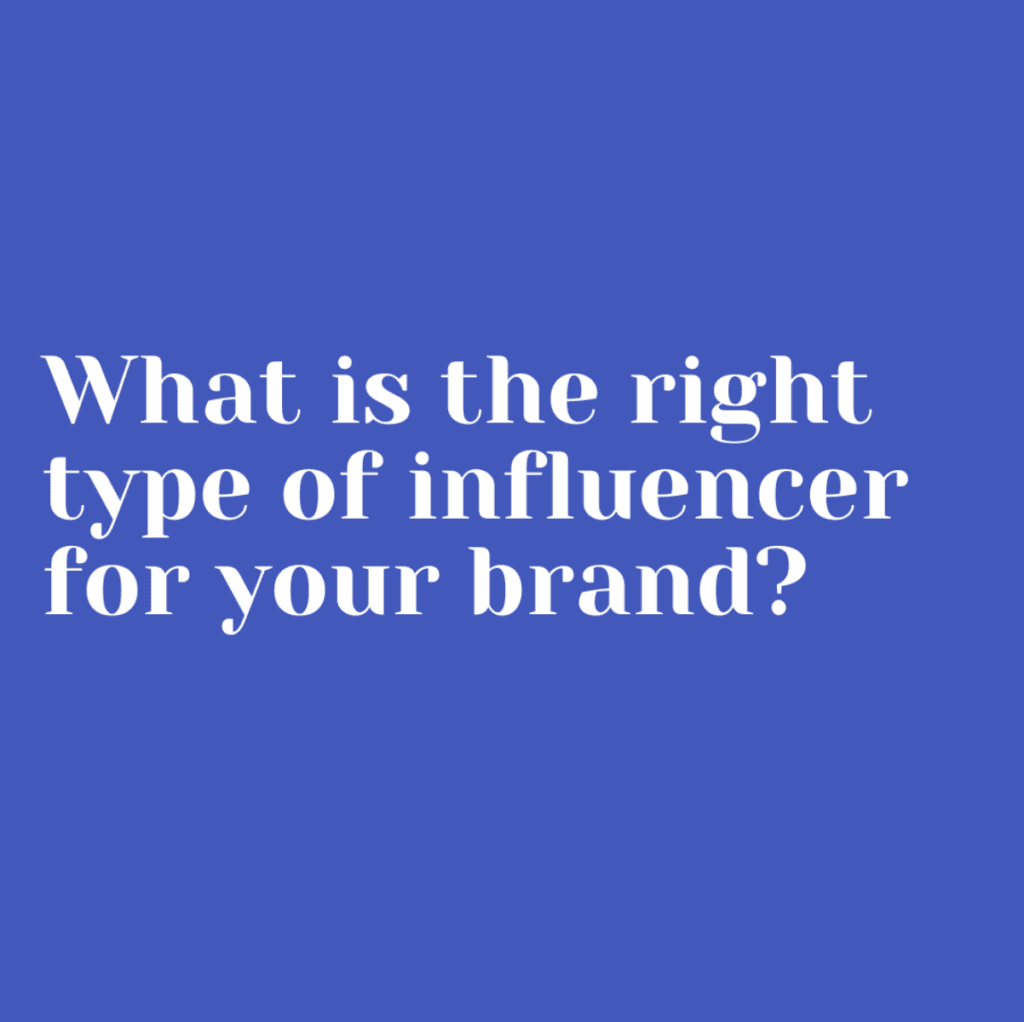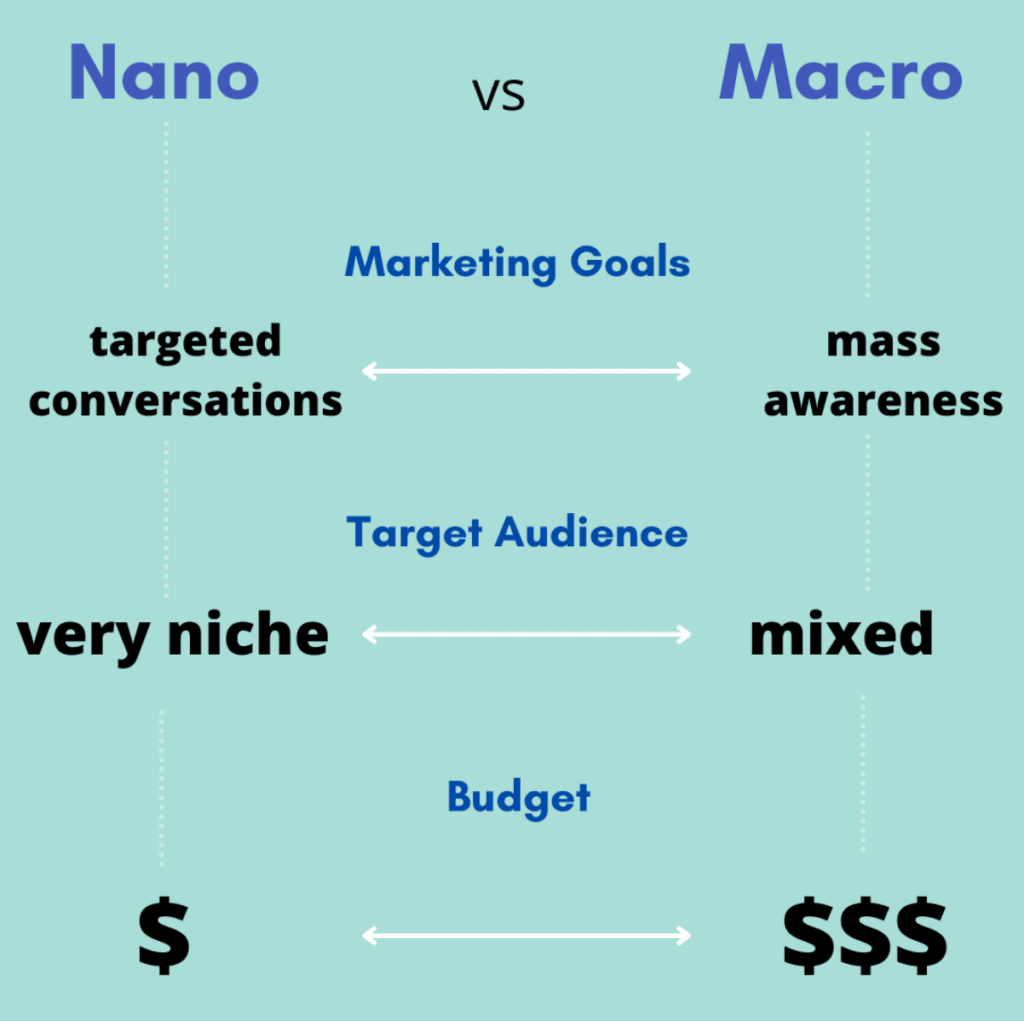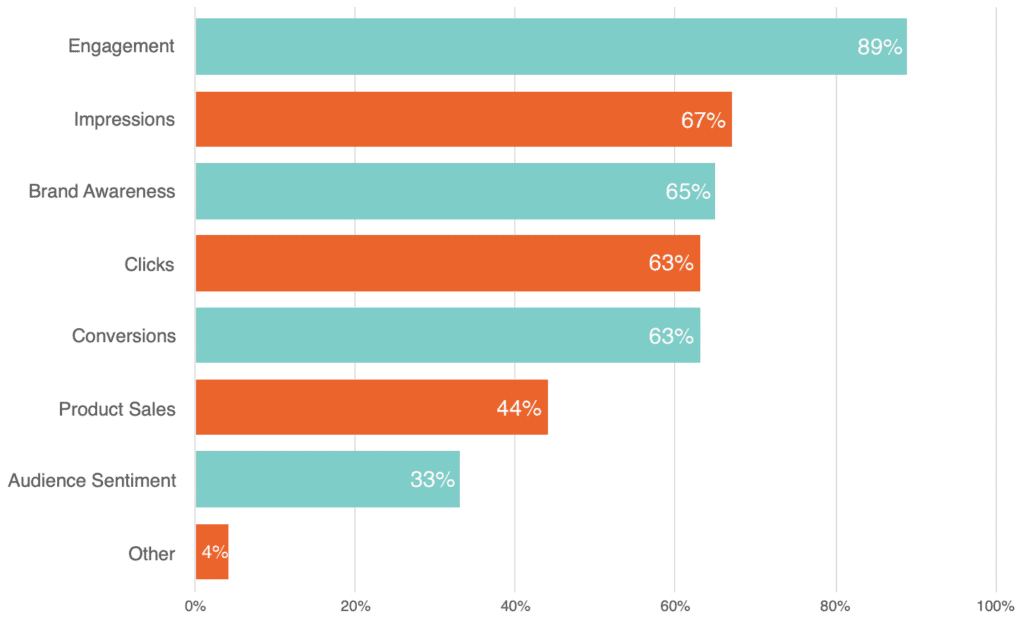When it comes to marketing trends, none have taken off like influencer marketing.
However, you might be asking yourself if it is actually worth investing in it. After all, you wouldn’t want to pay for something that won’t give you results.
We can confidently tell you that the answer is YES, if you do it right.

Influencer marketing is quickly growing and many companies are catching up to this fact and have started investing more of their marketing budget in influencers.
17% of marketers say their companies invest over half of their marketing budget on influencer marketing. It might not be the majority but it’s not an insignificant amount and the number will definitely continue to grow.
To understand why it has grown so quickly, take a look at the following stats:
223 million people are on social media in the U.S. alone and 4.2 billion globally.
A 2019 Edelman report shows that 63% of consumers trust what influencers have to say about products and services “much more” than what brands say about themselves.
Almost 90% of marketers say that ROI from influencer marketing is comparable or even better than other channels.

It’s clear that there is a great opportunity for companies to promote their products through influencer marketing.
Influencers allow your brand to cut through the noise of traditional advertising and reach your ideal customer in a natural way. Now consider that a single influencer can potentially generate millions of engagements on their social media posts.
That means millions of people looking at your product being recommended by someone who they trust.
Who wouldn’t want that?
We know running an influencer campaign seems intimidating at first, and you probably have many questions right now. That’s why we’ve created this guide.
Our goal is to walk you through nearly everything you need to know to get started and manage a successful influencer campaign.
Feel free to go to the section that interests you the most.
What is Influencer Marketing?
First, let’s define exactly what Influencer marketing is. Fortunately, it is a fairly straightforward system.
Influencer marketing is a type of social media marketing where a company pays an influencer to endorse their product.
The partnerships that Influencers make with brands are often social only and campaign based, meaning they are short term and only require the influencers to make 1 – 2 pieces of content.
This marketing strategy has been proven to be one of the most effective in driving awareness. Especially for product launches where awareness is the main KPI, as this form of marketing is able to quickly generate widespread, mainstream knowledge of a product.
With that out of the way, we still have to define what an influencer is in order for you to start planning your influencer marketing campaign the right way.
What is an influencer?
You might think that the answer is straightforward, someone with a lot of followers. However, while that is true to some extent, it is not the full definition.
An influencer is someone who has the ability to affect people’s decisions based on the audience’s opinions of him or her.
It all comes down to the influence someone has on others and having a farther reach than most people.
Influencers are motivated by continuing to grow and expand their own brand and audience, so they want to carefully select brands that their followers will connect with and that will enhance their personal image.
By working with as many different brands as they can, they’re able to quickly create a level of widespread awareness that can be difficult for a single brand to emulate on their own.
But how many followers does a person need to be considered an influencer?
Generally speaking, around 1,000, but they are called nano influencers. These are the types of influencers categorized by their followers:

- Nano influencers: 1,000 – 10,000
- Micro influencers: 10,000 – 50,000
- Mid-tier influencers: 50,000 – 500,000
- Macro influencers: 500,000 – 1 million
- Mega influencers: 1 million – 5 million
- Celebrity influencers: Over 5 million followers
People with less than 1,000 followers can also be valuable for a word of mouth marketing strategy, however, they can be categorized as brand ambassadors (brand ambassadors can also have a large following).
Recommended: Check out this piece of content we wrote on the differences between influencers and brand ambassadors. Influencers vs. Ambassadors: Why Choose One?

To plan your strategy, you need to consider the different types of influencers, your goals, who your target audience is following and your budget, among other things.
A macro or mega influencer will not necessarily be the best option for your campaign.
Just think about it for a second.
Would your brand benefit more from having 1 person promote your product to millions of people with different backgrounds and interests, or several nano and micro influencers promote it to fewer people but with similar backgrounds and interests?
It all depends on the goals you set for your brand.
Influencer payment
Rates for content creation depends on the person, social network, and campaign. But in this section, we will try to give you an average of how much every type of influencer charges per social media post.
This way you can have a general idea of your budget’s capabilities.
Note: Keep in mind that these numbers don’t apply to every influencer.
- Nano influencers: $10 – $100
- Micro influencers: $100 – $500
- Mid-tier influencers: $500 – $5,000
- Macro influencers: $5,000 – $10,000
- Mega influencers: $10,000 – $50,000
- Celebrity influencers: Over $50,000
Celebrities with massive amounts of followers can even charge hundreds of thousands of dollars for a single Instagram post.
Youtube
- Nano influencers: $20 – $200
- Micro influencers: $200 – $1,000
- Mid-tier influencers: $1,000 – $10,000
- Macro influencers: $10,000 – $20,000
- Mega influencers: $20,000 – $100,000
- Celebrity influencers: Over $100,000
Another way YouTubers can charge for video content is with a rate per 1,000 views.
TikTok
- Nano influencers: $5 – $25
- Micro influencers: $25 – $250
- Mid-tier influencers: $250 – $2,500
- Macro influencers: $2,500 – $5,000
- Mega influencers: $5,000 – $25,000
- Celebrity influencers: Over $25,000
- Nano influencers: $2 – $20
- Micro influencers: $20 – $100
- Mid-tier influencers: $100 – $1,000
- Macro influencers: $1,000 – $2,000
- Mega influencers: $2,000 – $10,000
- Celebrity influencers: Over $10,000
- Nano influencers: $25 – $250
- Micro influencers: $250 – $1,250
- Mid-tier influencers: $1,250 – $12,500
- Macro influencers: $12,500 – $25,000
- Mega influencers: $25,000 – $125,000
- Celebrity influencers: Over $125,000
Fortunately, the pay-per-post model is not the only option.
There are different payment models that you can use for your campaign, as long as the influencer agrees, of course. Some of these options are:
- Free products
- Commissions
- Perks
Consider all options before starting your campaign and adjust your budget accordingly.

Finding and Recruiting The Right Influencers
Now that you have decided which type of influencer you’d like to work with, it’s time to start looking for the right candidates.
If influencers are selected properly by the brand, their product or service will be exposed to an audience full of potential customers.
This is a very important part of the process that you shouldn’t take lightly. There are many influencers out there with very unique audience demographics and a simple evaluation of candidates won’t make your campaign as successful as it can be.
Follow these steps to find the right influencer for your brand.
1. Set goals
Take some time to think about your brand, customers, target market, niche, core values, goals, etc., and be specific.
Ask yourself, do you want conversions or awareness?
All of this information is helpful because by understanding what appeals to your customers and by setting realistic goals, you can make the right decisions.
Once you know what you want to achieve with your influencer program, it will be easier to find someone who aligns with your brand goals.
2. Identify your ideal influencer profile
Some factor that you should consider are:
- Which social media do you want to be targeting?
- What type of influencer do you need, nano, micro, macro, or mega?
- How much does the audience engage with the influencer?
- What are his or her audience demographics?
- Were previous collaborations with other brands successful?
Be sure to check out the influencer’s engagement metrics because they are good indicators of their influence. It’s more likely people will engage with your brand if his or her followers are actively interacting.
Be cautious of influencers with high follower counts but little engagement. They might be using tactics to inflate their followers and trick brands into paying them.
We talk more about influencer fraud in another section of this guide.
3. Research
Now it’s time to do some digging. This means that you will have to look for influencers that match the ideal profile you identified before.
There are different approaches to finding the right candidate. You can start by looking at your own customer base. People who already follow your brand make for great influencers.
Once you have explored that option, go into influential people’s pages who have authority in your industry and you’re familiar with. Look for suggested accounts, who they follow and compile a list of possible candidates. Then, go into those profiles and do the same thing.
You can also look at their followers’ profiles and see who else they’re following.
Another thing you can do is search popular hashtags related to your industry and see who is making the type of content you are looking for.
Or, you can use a smart influencer marketing platform to make this process easier. With SocialLadder you can identify your ideal influencers, look at their stats and reach out to them, which is the next step.
4. Reach out
Influencers usually make it easy for brands to reach out to them. Look for a business email in their bio or send them a private message asking if they are open to a collaboration.
If the influencer is very popular, you will probably end up talking to a manager who will give you the prices per post, video, or story.
Here, you can coordinate the campaign and start the preparations.
QUICK TIP
If you are paying for an unboxing and review, make sure you are offering a unique experience. Your product can really stand out if the packaging and unboxing experience are special.
Influencer Campaign Tracking
Tracking is one of the most difficult parts of this type of marketing campaign. In fact, 52% of marketers agree that measuring ROI is the top challenge of influencer management.
Before starting your campaign, you should decide which metrics to focus on. With this information, it will be easier to decide what are your KPIs (key performance indicators) and determine the ROI during and after the campaign.
These are some metrics that you should start tracking:
- Engagement
- Conversions
- Impressions
- Awareness
- Clicks
- Sales
Take a look at how marketers measure the success of their influencer marketing programs.

As you can see, it is better to track more than one metric and focus your media strategy on getting the numbers that matter to you.
Tracking the results will also allow you to optimize your campaign and keep doing the things that work.
Don’t start a campaign without knowing what to track or how to do it. Taking shots in the dark won’t get you consistent results.
But, how can you track a campaign?
There are different methods for different metrics. These are a few ideas you can try:
- Unique promo codes
- Affiliate links
- UTM parameters to track links
- Unique landing pages for the campaign
With SocialLadder your team can track, review and measure ROI of influencer activity from the same platform.
You should also keep track of your own followers and engagement resulting from the endorsement.
Make adjustments to your marketing plan accordingly.
What About Influencer Fraud?
If you’re not properly selecting your influencers you can fall into a trap that can be costly for your budget.
We’re talking about influencer fraud, which is one of the main issues plaguing influencer marketing.
In short, everyone wants to be an influencer, but not everyone with a high follower count has the legitimate influence to make it a worthy investment for the brand.
This usually happens when people buy followers or bots (fake accounts) to inflate their follower count.
Fortunately, new standards of business have been set to combat and avoid this issue, but brands should still keep this in mind and monitor influencers they are working with in order to see a positive ROI for their social strategy.
What’s Next?
Influencer marketing is growing at a staggering pace and does not seem to be going anywhere anytime soon.
With so much marketing done through social media these days, it may be a wise investment to look into bringing on some influencers of your own.
As long as you are looking for influencers that produce quality and honest content that aligns with your brand, influencer marketing is a great way to increase both brand awareness and fan engagement.
Hopefully, this guide cleared up some of your doubts about influencer marketing. If there is one key takeaway from this, it’s that influencer marketing is a great investment to reach your target audiences in a human way.
Optimize your digital marketing channels and get more clients.
Interested in learning more about influencer marketing? Check out these other blog posts:
Influencers vs. Ambassadors: Why Choose One?
Are All Social Media Influencers The Same?
The Value of Influencer Marketing
FTC Compliance: Best Practices For Social Media Influencers And Content Creators
Are You a Victim of Influencer Fraud?
Forget Influencers, It’s The Year Of The Super Fan
Enhanced Instagram Features Perfect for Managing Your Influencers



